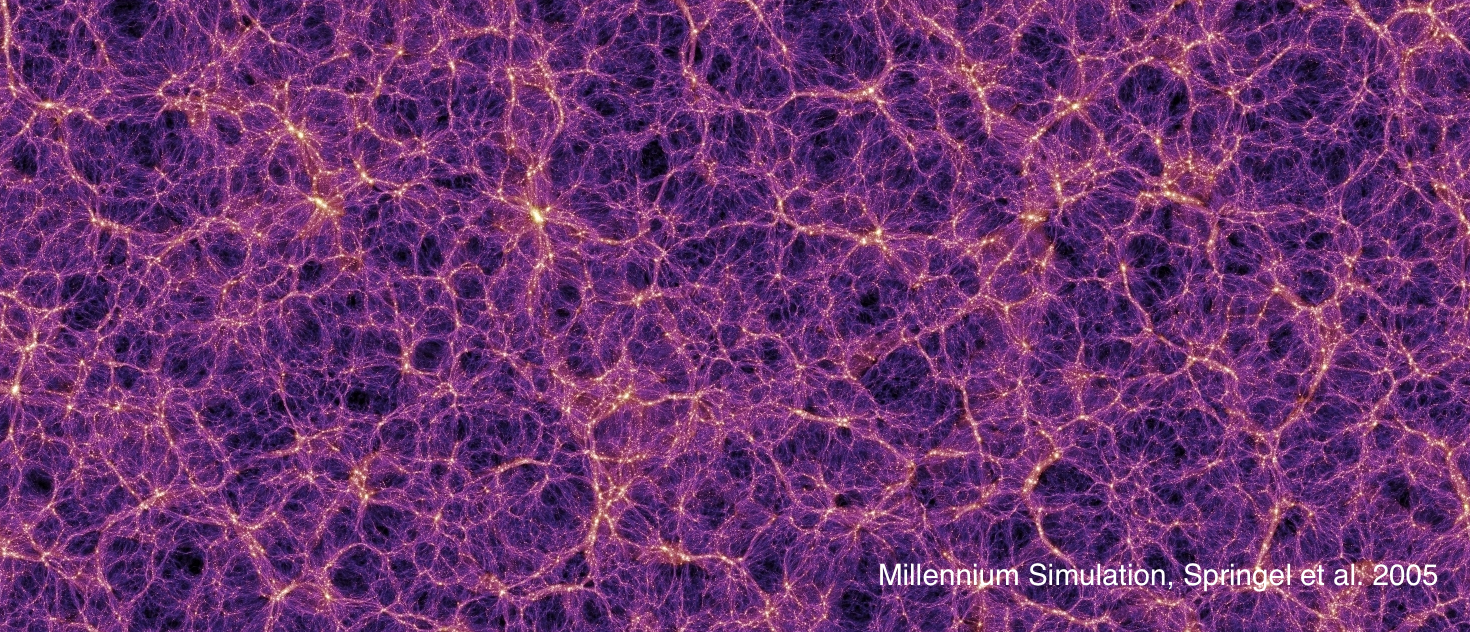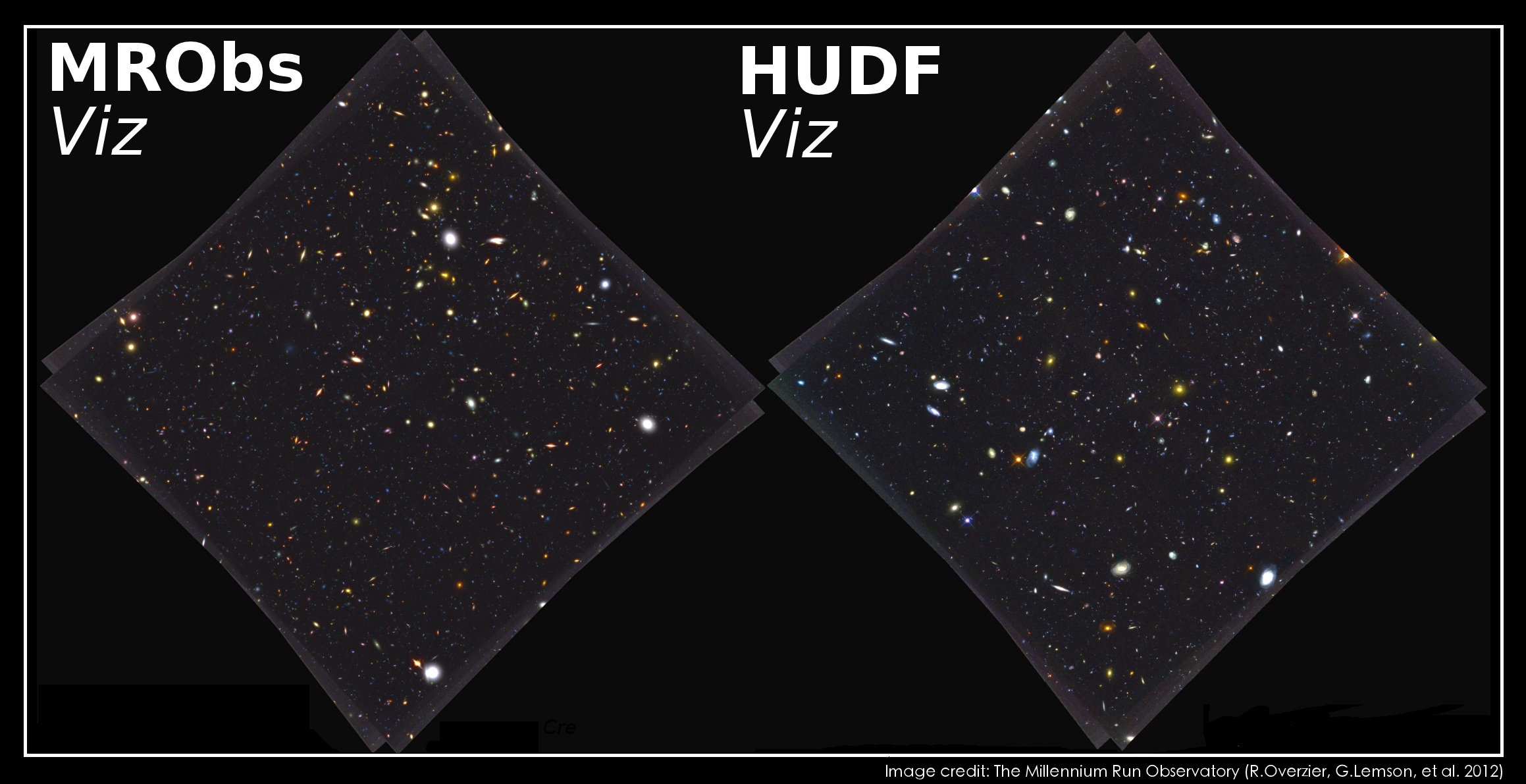Semi-analytic models of galaxy formation are built on a description of the redshift evolution of the mass and number density of dark matter halos in terms of their merger history (the so-called merger trees). The evolution of the baryonic component hosted by these halos is then followed by means of a set of parametrised, physically based equations, to describe the physical processes that affect galaxy formation and evolution. The Munich galaxy formation model includes physical prescriptions for processes such as gas cooling, star formation, supernova feedback, formation and growth of black holes, AGN feedback and galaxy interactions and mergers that have been gradually developed over the years. A few simple slides describing the main components of the model can be found in LGalaxies_slides.pdf .
Catalogues released for the model typically include snapshots of the (sub)halo and galaxy populations with extended photometric coverage and star formation and metallicity histories, as well as lightcones with photometry based on two different stellar population synthesis models. These are available in the Millennium Database.
Henriques et al. 2015 model release:
Henriques et al. 2019 model release:
A snapshot of the dark matter only simulation:

On the left, simulated galaxies seen through a lightcone, on the right, real data from HST:
